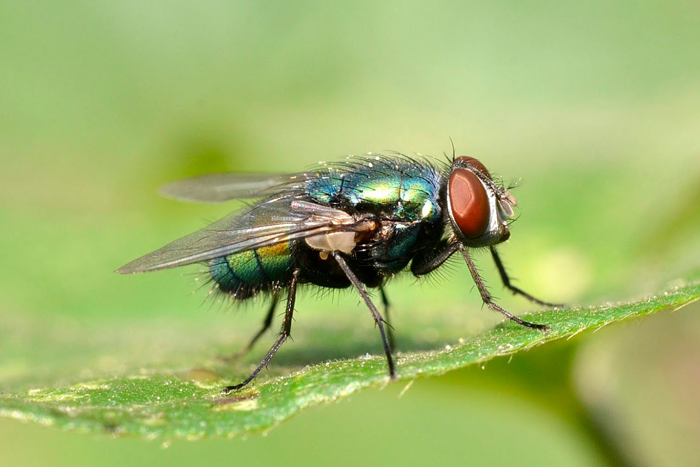


Flies are an insect in the order of Diptera (derived from the Greek di=two, and ptera=wings). A single fly carries up to 33 million highly dangerous microbes. Flies vomit every time they land and they digest externally to soften their food. By doing that, flies are able to transfer dangerous microbes to the contaminated foods. Flies also are highly associated with humans but it is more on the sanitary and hygienic discipline. More often we see flies at places like garbage areas, exposed foods and so on.
In this proposal, we will highlight the characteristics of flies, what effect it might leave us to, the method of elimination and so forth. But before going further to this proposal, we shall explain on the biology of flies, generally. We will share on a few species common flies in Malaysia

The common housefly, Musca domestica L. is cosmopolitan in distribution. It is commonly found in close association with human dwellings and widely distributed in tropical countries. This species is always found everywhere that man exists and has adapted itself extremely well in man’s environment. In Malaysia, besides the house fly, Musca domestica, other synanthropic flies such as Musca sorbens, Chrysomya megacephala, Chrysomya rufifacies, Lucilia cuprina, Sarcophaga species, Ophyra species, and other species are common in lowlands and highlands, particularly abundant in poultry, dairy, pigs and agriculture farms, dumping grounds and also slaughterhouses. (Pesticides applicators manual, 2007)
Impact of flies to the economic
It is very broad to discuss the economy’s impact by flies. Flies do not destruct buildings. We strongly believe that flies do attack the food processing area, which resulted in the contamination of food and this may lead to a bigger spending to replace the contaminated. But simply we can say that flies do transmit the vital disease to our body. And it is fatal.
Impact of flies – DISEASES
Sand flies found throughout South America, Africa, and Europe are carriers of a microorganism responsible for a disease that eats away the human skin, known as Leishmaniasis, and for which there is no definitive treatment. Other parasites that flies carry can cause diseases from sleeping sickness to typhoid fever, cholera and even leprosy (Hansen’s disease). The flies themselves are simply carriers of the parasites and diseases. They pick them up from rotting food, excrement, and people or animals that are already infected. They seek out these conditions as food sources and to lay their eggs.
Impact of flies – INFESTATIONS
Stored and raw foods are a common location for flies to lay eggs, as when they hatch the larva will have something to eat as they mature. Almost any kind of dried food including grains and cereals are a target for fly infestation, as well as processed foods such as crackers, pasta, nuts, and dried fruits. Though flies are attracted to raw meat and decaying food and garbage, they will also infest cured meats as well as pet food and even birdseed. Any type of food product can be a target for fly infestation if they have a way of getting to it. It is possible for them to penetrate unopened paper or thin cardboard and plastic packaging to lay their eggs as well.




